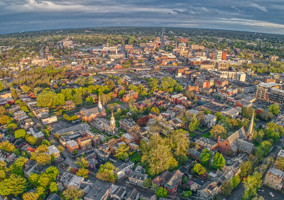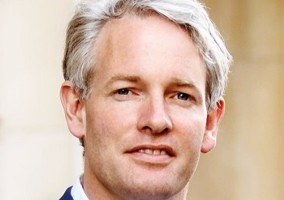If the UK is to level up, does philanthropy have a role? Outside challenging ultra-high-net-worth donors and foundations to put place at the heart of their thinking (many do, lots more could), there’s the question of how to nurture philanthropy within and for local communities.
The UK already has a remarkable network of 47 community foundations, one each in the devolved nations and the remainder serving counties and metropolitan areas in England. While traditional charitable trusts have a single founder, donor or corporate parent, community foundations have multiple funds set up by local donors and others connected to our places.
Mine, the Community Foundation Tyne & Wear and Northumberland, is the largest by asset size. Observers are often surprised that such philanthropic scale has been achieved in one of the country’s poorest regions. They often assume our money has come from ‘the landed gentry’ or some other one-off windfall. No. It’s from generous people, families and businesses we’ve inspired, and whose charitable wishes we’ve succeeded in marrying with needs in our communities.
'Building endowment as an asset to benefit communities'
At the heart of our model is building endowment as an asset to benefit communities now and for generations to come. Before community foundations came along, there was no tradition of local endowment building in the UK, perhaps with the exception of the older universities and a few big arts institutions.
But that changed when, in 1990 The Charities Aid Foundation (CAF) and US-based Charles Stewart Mott Foundation came together to offer a £2m endowment match challenge to kick-start the growth of community foundations here. The three early-stage foundations chosen – Greater Bristol (now Quartet), Cleveland (now Tees Valley) and us – each had to raise £1.34m to get a matching share of £667,000 to achieve a £2m endowment. The scheme made endowment building respectable, practical and attractive. Subsequently, it was emulated by Esmée Fairbairn Foundation through its Time for Growth scheme which invested £1m in ten other community foundations, giving them each the target of achieving a £2m endowment, raising £19.5m overall.
Governments came late to the idea but, in 2008, the Labour administration set up Grassroots, offering £50m in local endowment match alongside a small grants scheme. Grassroots adopted some of the lessons from the CAF/Mott challenge and worked well to incentivise donors to increase their philanthropy or move into endowment for the first time. In 2012, the Coalition Government followed suit with Community First, a further £50m endowment match through community foundations in England which ran to March 2015.
What can be learned from these schemes, and how might further endowment challenges support local philanthropy building as part of levelling up?
Focus needs to be on the wishes of donors
Well, it’s clear match works, but how effectively depends on the terms of individual schemes. I’d argue that focus needs to be less on the theories of change of the institutions providing the match, and more on the wishes of donors whose giving they are meant to incentivise. It’s also important to be realistic about the incentivising effect.
Our experience is that the availability of match has rarely encouraged someone to make a major donation if they were not already motivated to give in some way. But match has often been a tipping point to give sooner, to give more or to give differently. Even then, having the match doesn’t just mean money rolls in. There must be a compelling proposition and resources for donor engagement.
Some places which may be the focus of levelling up have not to date benefited as much as they could from endowment matching. Indeed, during Community First, match funds allocated to some areas were redeployed to others that had used up their initial allocation. The result was an overall success, but a patchy result geographically. For a new scheme to purposefully ensure levelling up, it might need to provide match only in target areas or give those areas a greater share. It would undoubtedly need to fund development costs to be successful.
Would all this mean better community philanthropy? That depends on your definition. Across the globe, community foundations and others are exploring more diverse models as both grassroots funders and channels for local giving. Many of the most innovative developments are in the global south, but in the UK we too are seeing more experiments in, for example, participatory grant-making and giving circles. But how far any match scheme could mark a sea-change in the scale of local endowment and be genuinely community led is moot when, to work best, it would need to meet donors’ wishes and interests.
The answer, I think, would lie in the magic of community foundations which bring ‘doers and donors’ together in a place, each benefiting from the other’s role and contribution.
Rob Williamson is chief executive at Community Foundation Tyne & Wear and Northumberland
Related articles












